Political Geographies of the Sea
Historically, when human geographers have studied the ocean, they most often have looked to the sea as a space of politics and, in particular, as an arena for geopolitical conflict. The ocean has been viewed as a space in which the forces of land based states meet as each attempts to control crucial areas of the sea (e.g., choke points […]
Emergent Geographies of the Sea
These epistemological shifts, in turn, have led to new areas of research in the human geography of the ocean. In the remainder of this section, four areas of human geography are reviewed: political, cultural, environmental, and economic geographies of the sea.
A Sea Change in Epistemology
In recent decades, each of these barriers to human geographic research on the ocean has been challenged by broad reaching shifts in social thought. Turning first to the barrier of state centrism, since the 1970s the rise of globalization studies has led to the emergence of a number of perspectives that challenge the prevailing view of the world as a […]

Oceans
The Forgotten 71% Oceans cover 71% of the Earth's surface and contain 97% of the planet's water. Over 20% of the world's petroleum is derived from offshore sources and 95% of world trade by weight, or two thirds by value, is carried by ship. Eighty percent of the world's fish catch comes from the ocean, supporting the livelihoods of 140 […]
The Future of Agricultural Land Preservation
Government responses to the urbanization of agricultural land have recognized the need to develop programs to support agricultural viability in conjunction with agricultural land preservation policies. However, policies to protect agricultural land must account for the uncertainty of the agricultural economy. If farming becomes too unprofitable an occupation, it will not be economically viable for governments or private landowners to […]
Approaches for Preserving Agricultural Land
Since the realization was made that the conversion of agricultural lands to urban uses in the post World War II era was having an impact on the ability of farmers to operate, and threatening future food security in the Western world, a range of approaches have been implemented. Some were designed specifically for, or dominated by, agricultural interests. Others […]
Agricultural Land Preservation
Why Protect Agricultural Land The success of today's agricultural sector is vital to the economy of most nations. In Canada, for example, agriculture is the third largest contributor to the gross domestic product and employs over 762 000 people, but its supply of agricultural land is limited and unevenly distributed, with only 11% of the land base […]
The Second Half of the Twentieth Century
From the 1950s, agricultural policy was a main driving force within the growing European Economic Community (EEC). Already during the 1950s, agriculture in France and the Netherlands had recovered from wartime damage and searched for new export markets. Germany, that had lost many of its most productive agricultural regions, aimed at reestablishment of its position as an industrial nation and expected […]
The Nineteenth and Early Twentieth Centuries
The Agrarian crisis of the 1880s brought yet another transformation. Again, this was mainly a grain crisis, caused by the competition of Russian and, particularly, American grain. The transport revolution – intercontinental trains and ever larger transatlantic steamships – tipped the balance and within a few years American grain, cheaply produced on large farms, flooded the European market. European countries reacted […]

The Early Modern Period
A slow recovery started during the fifteenth century and continued during the 'long sixteenth century'. A new phase of economic integration started during this period, in which the European economies and landscapes re grouped around northwestern Europe, the only re maining core region. The main center of trade moved within the core region from Antwerp (sixteenth century) to Holland (particularly Amsterdam, seventeenth […]
The Late Middle Ages
During the first half of the fourteenth century, the population had reached a maximum. A population that had become increasingly dependent on grain, was hit hard by a succession of bad harvests and, in the years after 1346, by the large plague epidemic. Within a few decades, the European population dropped by almost a third. There were exceptions. In the Low […]
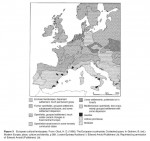
Early and High Medieval Europe
In many parts of Europe, within as well as outside the struggling Roman Empire, the third to fifth centuries AD were a period of crisis and de population. This was followed by a slow recovery in the following centuries. During the seventh to ninth centuries, the peripheries of Europe, Scandinavia, Ireland, Muslim Spain, and the Byzantine Empire, showed the more […]

Agrarian Transformations
For thousands of years, landscape and society have been heavily influenced by developments in agriculture. In most preindustrial societies, agriculture occupied the majority of the population. Holland was an early exception, with the majority of the population already living in towns at the end of the sixteenth century. Most countries in Western Europe reached this point somewhere during the first […]
Gendered Boundaries
In considering what it is about the gender(ing), situation(s) and treatment of women that entails their heightened susceptibility to agoraphobia, geographers have considered the potential significance of gender role stereotypes. For women, such stereotypes involve characteristics not dissimilar to those found in agoraphobia; a woman's place is commonly described as in the home. Such notions about proper behavior and roles […]
Managing Social Space
Common Coping Mechanisms Given the crisis state of spatial affairs entailed by agoraphobia, it is unsurprising that the subjects should attempt to find ways to protect themselves. Erving Goffman's sociology has been inspirational for feminist studies of agoraphobia because of his attempts to elucidate the nature of less pathological social anxieties (such as everyday embarrassments) and the tactics by which they […]
Embodying and Theorizing Agoraphobia
Placing Panic Drawing on in depth interviews with agoraphobics, geographical studies have stressed that the phenomeno logical aspects of agoraphobia of overwhelming signifi cance for its sufferers relate primarily to the experience of panic. A panic attack involves a wide range of terrifying mind–body symptoms, including: chest pain, palpitations, and shortness of breath; feelings of going crazy and losing control […]
Agoraphobia
Introduction Since the late 1970s, there has been a surge of interest in agoraphobia and panic among clinicians, and publications on the subject often begin by drawing attention to its contemporary prevalence. Agoraphobia is described by clinical researchers as one of the most common – as well as distressing – phobic disorders encountered. The significance of phobic anxieties for contemporary […]
How Do Agglomerations Emerge and Develop – Historical Approaches
Spatial agglomerations of similar and related economic activity often have deep historical roots. An alternative way to understand the agglomeration phenomenon is to study real agglomerations historically in order to analyze their birth, growth, saturation, decline, and possible reinvigoration. The origin of the agglomeration in such accounts, that is, the event or action which triggered subsequent developments, sometimes turns out to […]
What Factors Make Up Agglomeration Economies?
Identifying and analyzing those advantages that may accrue to firms located in close juxtaposition to other similar and related firms, rather than being located in isolation, is one way to account for the agglomeration phenomenon. The concept of agglomeration economies (or localization economies) refers to these advantages. The basic understanding of this concept was in place already a century ago. Thus, Alfred […]
False Paradoxes and ‘Circular Logics’
The research problem attached to the agglomeration phenomenon may seem to be trivial. We have a phenomenon that can be observed in reality. Firms in the same or related industries often – although far from always – tend to co locate in space, and this should reasonably indicate that there should be some advantages connected to such a […]
The Core Issue of Economic Geography
In the context of economic geography, agglomeration may refer to a concentration in space of some entity, or the process by which such a spatial formation is created. While the dictionary definitions signal that agglomeration is to be understood as an unsystematic, haphazard process, where some entities pile up together in space but are not really affected in any particular […]
Agglomeration
The term agglomeration can be used both as a noun and as a verb. Dictionary entries of agglomeration as a noun will typically refer to a ''collection or mass of things rudely or loosely thrown or huddled together,'' an ''unmethodical assemblage,'' a ''confused or jumbled mass,'' or merely a ''clustering or cluster.'' As a verb, consequently, agglomeration refers to […]
Conclusion: Performing age
Recent work within geography has highlighted the performed nature of identity. This approach has been very useful in deepening understandings of the ways gender and sexuality, for example, are not fixed or given but continually performed and endlessly capable of disruption and reinvention. There has been very little work approaching age in this way, although such an approach offers many […]
Relational Geographies of Age
This section considers current trends and directions being addressed by and impacting upon geographies of age. Relational approaches to age help render the operation of age explicit within all geographical analysis and support greater awareness of age and ageism throughout human geographical research. This has strong parallels with the way understandings of gender and race now inform a vast range of […]

Geographies of Older People
While there has been significantly less geographical work on older than younger people, there is a growing willingness among geographers to explore the ways space, place, and scale impact upon and are shaped by older people. Geographers have thus looked at ageism within spatial planning and the ways older people experience the built environment as well as how older age […]
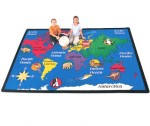
Children’s Geographies
There has been sufficient research, publication, and teaching activity in the field of children's geographies since Alison James' seminal piece in the journal Area in 1990 that a distinct subdiscipline has emerged, complete with its own journal (Children's Geographies, founded in 2003) and a specialty research group of the RGS IBG (Children, Youth and Family Working Group, formed in 2006). As the […]
Ageism and Age
Age is important. Alongside gender, race, ethnicity, sexual orientation, class, dis/ability, and other axes of social difference, age shapes the social world at every scale and in many different ways. In common with all lines of social difference, age is also the site of oppression and prejudice. Ageism, or prejudice based on age, takes many forms. It is one […]
Mobility and Older People’s Quality of Life
Studies of migration tend to feature the more visible and radical forms, like retirement to Spain or Costa Rica, or the return from London or New York to Jamaica, when most migrations by older people are local housing adjustments – like those by adults of all ages. Many local moves make an important contribution to maintaining older people's independence and […]
Recent Developments in Retirement Migration
The percentage of United States retirees who migrate abroad is very small, but given the very large population and the recent surge of international travel and communications, the absolute number is growing. The phenomenon has recently attracted a major study by the Migration Policy Institute in 2006 in Washington DC. This found that ''the US born senior population (aged […]
Migrants in Advanced Old Age
A particular concern of both older people's welfare organizations and the public authorities in areas with high concentrations of older migrants is that some, through poor planning, bad luck, or sickness, end up in situations in which they are isolated, impoverished, and out of touch with both formal and informal support. Most who move long distances for retirement, whether within […]
Older Minority-Group Migrants in Rich Countries
In most developed countries, many surveys of the health and treatment needs of minority group older migrants are now undertaken by health and social services agencies, which of course have privileged access to their patients, and have the resources needed to translate questionnaires and employ bilingual interviewers. The findings of such surveys are largely descriptive and policy and practice oriented, and have […]
Return and Family-Joining Older Migrants
Alongside the two main types of older migrants, there are others about which much less is known. The most apparent are 'return migrants', the labor migrants of long residence who return to their native regions and countries when they cease work. They are themselves diverse, and their migrations straddle internal and international moves. In all countries, some who moved […]
Aged Labor Migrants
A contrasting group of older migrants comprises labor migrants who have reached old age in the countries to which they moved in their early adult years. They are also socially diverse, but in Europe very many migrated from the Caribbean, north and west Africa, Turkey, the Middle East, and the Indian subcontinent to the cities of northwest Europe from the 1950s […]
International Retirement Migration
The first international retirement flow to attract the attention of American researchers was of Canadians to Florida, and the first to attract the attention of European population geographers was the settlement of northern European retirees in various regions of southern Europe. The latter moves began to increase rapidly during the 1960s for a host of reasons: the new democratic regimes in […]
Internal Retirement Migration
A third interest shared by population geographers and social gerontologists has been to understand the motivations, patterns, and consequences of retirement migration. Until the 1980s, almost all such moves were within various European countries, the United States, and Australia. The settlement of estranged aristocrats and retired senior soldiers and sailors to coastal resorts and spas was evident even before the […]
Migration and Old Age
Although migration researchers focus on young adults' moves, for more than 25 years, population geographers and social gerontologists have studied old age migrations and migrants. The first interest, in the 1940s, was whether moves into nursing homes or between hospitals entailed a mortality risk. By the early 1980s, Pastalan, in Rowles and Otha in 1983, was able to review 34 US […]

Ageing and Mobility
Migration can be defined as a change in residence from one location to another. Such movements are immensely diverse, from short distance house changes to intercontinental moves. Many moves are short term, have little impact on the migrants' lives, and are reversible; others are permanent and life changing. As migration is a spatial process, it has been keenly studied by […]
Emerging Critical Perspectives
Reflecting the emergence of critical perspectives in both social gerontology and human geography, research published since the mid 1990s draws much more on social theory, focuses on constructions and representations of aging and challenges accepted social norms about aging. Moving away from treating older people as 'objects' of study, several studies engage with aging and the concept of embodiment, and talk […]

Residence and Care
It is typical for studies in this field to simultaneously capture elements of older peoples' residential (living) arrangements, and their health and social care. This is because in older age, many older people require both assistance with their everyday living activities and various health and social services. Consequently many places – including nursing homes, residential homes, assisted living arrangements, retirement communities, and […]

Negotiating Environments
Some of the earliest geographical research, which engaged with older peoples' changing relationships with environments, drew heavily on environmental psychology published in the 1960s and 1970s, and in particular on the pathbreaking work of gerontologist Powel Lawton. Lawton's ecological theory of aging was most famously articulated through his environmental docility hypothesis (also associated with terms such as aging and […]

The Health of Older Populations
Another long standing strand of research is focused on the health of older populations. Population geographers and demographers, along with epidemiologists and health geographers have played central roles. At the national scale, life expectancy in specific countries is an important consideration and bodies such as the World Health Organization have produced a number of publications outlining rates and variations in expectancy. Health […]

Movements of Older Population
Over the last 20 years, a great deal of research has focused on movements of older population. At one level, research has focused on broad migration patterns. Other studies – often which are qualitative have investigated some important social contexts and consequences such as family networks and the pushes and pulls to and from different locations in migration decision making, […]

Population Aging
Since the 1950s, a long standing strand of aging and health research has been concerned with population aging. It is an area of interest dominated by the work of demographers and population geographers who have particular expertise in handling and analysing large population data sets that are essential sources for these studies. Researchers have identified the spatial patterning and characteristics of demographic […]
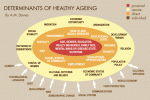
Ageing and Health
When considering the potential importance of the geographical study of older people and populations, some basic facts are well worth remembering. Older people – typically defined by governments and other officialdom as being over 65 years of age – constitute a significant and growing proportion of the general populations of both developed and developing world counties; the former approximately 15%, the […]
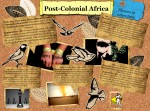
Postcolonial Africa
The phrase, 'postcolonial Africa' is literally a reference to the continent in the period after the end of European colonialism. However, the usage of the phrase in this sense is actually inadequate, because the autonomy of African states is so circumscribed and the legacies of colonialism so great as to lead many to question how far African countries can be considered […]

(Under)Developing Africa
1In the nineteenth-century, European geographers explored the African continent and then aided and abetted the colonial conquest. In the twentieth century, they mostly served the cause of establishing and maintaining colonial rule during the first half, and then worked in the cause that came to be called Africa's 'development', in combination with new generations of African professional geographers. This project of […]

Representing Africa II: Exploration, Colonialism, and Imperialism
The earliest European human geographies of Africa were geographies of exploration and conquest, and from the era of the Atlantic slave trade through colonialism (a span of exploitation of Africa stretching from about 1450 into the 1960s and 1970s), they shaped the way much of the world views Africa. Through the Atlantic slave trade, an estimated 11.6 million Africans were forcibly […]
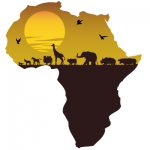
Representing Africa I: The Early Years
When non Africans talk about Africa today, it is often in the context of discussions of poverty, disease, warfare, or political instability. Africans are often represented as villains or victims. This was not at all the way the outside world's understanding of Africa began. Indeed, the whole notion of any generalized collective understanding of a landmass or entity called 'Africa' took […]
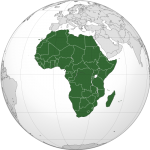
Introduction: Defining Africa
Africa is huge, diverse, and complex. Africa is identified as the world's second largest continent, covering more than 30 million square kilometers. Its diversity and complexity extend to its physical geography, climatology, and biogeography. Africa has many vast plateaus, five major basins, long stretches of fertile volcanic mountains not far from desolate wastelands below sea level, lakes that are among the world's […]
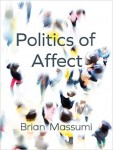
Conclusion: The Politics of Affect
For human geography, and for our roles as researchers, thinking with and using the concept of affect plugs us into the qualitative means and strategies we have for investigating the everyday worlds in which we live. Affect based research thus operates a strong political gesture in directing attention to the affective affinities produced among forms of life where we […]
Modes of Thinking Affect
Summarizing and working through the concept of affect, it is helpful to think of it in four different ways. The first two take affect to be a material thing, firstly understanding it as a phenomena and secondly as a force; then it can be addressed directly as a theory before finally understanding affect as a mode of expression. So […]
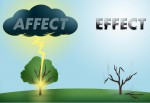
Affect
Affect is at once an actual phenomenon and a virtual force, a material effect and an immaterial disposition. As a conception, it pairs dangerously close to our understandings of emotion and therefore exists as something familiar and seemingly knowable despite not having objective tangibility. As a result of this it is often rendered academically in fairly abstract and philosophically […]

Activism and Academia: Contradictory Spaces?
Many of the remarks above gesture to the complications of working in the 'third space' between activism and academia, not least because the academy is traditionally suspicious of highly engaged, participatory, and transparently ethico politically 'committed' inquiry, but also sometimes because activists are (often justifiably) suspicious of what these academics are 'really' after (ultimately career boosting or wishing to make a […]
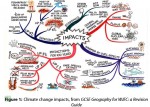
Responsible Activist Geographies
First, the motivation of activist geographies is to develop practices aimed at social transformation rather than merely the 'production of knowledge' and/or the 'solving' of 'local' problems. Activist research moves beyond the acquisition, cataloging, ordering, and the publishing of information toward jointly producing knowledge with resisting others to produce critical interpretations and readings of the world which are accessible, understandable to […]
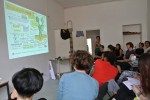
Activist Methodologies, Collaborations, and Everyday Life
This eruption of activist and related geographies within the discipline is taking place at a time in which there is increased social mobilization and conflict around the world. Issues such as globalizing capitalism, trade agreements, failed development, neoliberalism, and the war on terrorism have been met by opposition ranging from the Zapatista rebellion in Chiapas, itself both locally played out and stretching […]

Toward More Fully Activist Geographies
Since the 1970s, Marxist, feminist, and, more broadly, radical and critical geographers have produced outstanding scholarship and theorizing, substantively researching sociospatially constituted oppressions, inequalities, and injustices. Yet, there has often remained an uneasiness about the relative disconnect between such work and the potential of the discipline to contribute genuine activist interventions aiming to right the wrongs of such oppressions and the […]
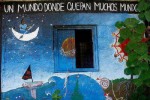
Activist Geographies
Geographers have been activists in two primary ways. First, geographers have constructed new theories and explanations for social phenomena that have both substantially altered the ways that students and researchers understand problems, and the ways that academia evaluates research. Geographers, and other social scientists, have challenged the status quo in scholarly approaches, methods, and substantive areas by offering conceptual frameworks that have highlighted the […]

Geographies of Activism Types and Catalysts of Activism
Activism centers on a variety of different issues, can be reformist or radical in its objectives, and consists of distinct methods ranging from peaceful civil disobedience to violence. The catalysts for activism often center on visible and substantial change in social values, political debates and decision makers, economic activities, or urban land use patterns, but require awareness or knowledge of the […]

Network Geographies
ANT can be said to be proposing network geographies. There are two aspects of this proposal that need mentioning: first are the basic characteristics of the geographical imagination advocated by ANT, and second is the methodological implication of this perspective for geographical research. Topological World Space and time are central to ANT. Actor-networks necessarily depend on nonhuman actors […]

Moves into Geography – Bypassing Dualisms
The move of ANT into the realm of human geography happened parallel to a general conceptual development in the field. This was not least expressed by the cultural turn, the general rise of feminist studies to prominence, and a broad relational view as, for instance, framed in the non representational theory. The import of ANT perspective into the fields of […]

Actor-Network Theory
Material Relationalism The origins of actor-network theory (ANT) can be traced to science and technology studies (STS) and sociology of scientific knowledge (SSK) in the early 1980s. The approach has from the start been especially associated with the figures of Bruno Latour, Michel Callon, and John Law, who are much inspired by the French philosophers Michel Foucault, Michel Serres, Gilles Deluze, and […]

Activist Geographies – Introduction
Activist geographies are concerned with action, reflection, and empowerment (of oneself and others) in order to challenge oppressive power relations. As a fusion of theory and practice (praxis), activist geographers seek to forge mutual solidarity with resisting others – communities, groups, social movements, or nongovernment organizations who are challenging various practices of dominating power – through critical collaboration. The objectives can […]

Activism
Introduction Activism is most commonly associated with collective or group action by ordinary people, usually volunteers, who come together to change what they consider to be unacceptable or unfair circumstances. These individuals come together in a shared belief about the nature of the problem, and the means to best address the issue, using political opportunity structures to enable their influence on […]
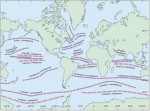
zones of convergence/divergence
A BROAD AREA WHERE two tectonic plates are colliding is a zone of convergence. An area where plates are moving apart is a zone of divergence. Convection in Earth's mantle drives the two motions. Convergence occurs above descending limbs of convective cells, whereas divergence takes place above cells' rising limbs. The two zones' geologies are similar in many ways—they both have mountain […]
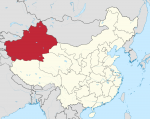
Xinjiang
THE XINJIANG UYGUR Autonomous Region (eastern Turkistan) is one of the CHINA's five autonomous regions and the largest provincial division. Xinjiang has an area of 635,871 square mi (1,646,900 square km) and a population of 19,250,000, and its capital is Urumqi. Xinjiang borders Tibet, Qinghai, Gansu, MONGOLIA, KAZAKHSTAN, KYRGYZSTAN, TAJIKISTAN, AFGHANISTAN, PAKISTAN, RUSSIA, and INDIA. Natural resources include crude oil, gas, iron, copper, […]

xerophytes
BIOGEOGRAPHERS AND ecologists usually classify plants according to their water needs. Since the global distribution of water varies from dry to wet, plants also vary in their adaptation to the availability of water. Xerophytes are plants of the arid regions. The Greek prefix xero- means dry in contrast to hygro- (wet) and meso- (intermediate). Xerophytes as a class of plants are […]

wine geography
FROM THE TIME THAT the seafaring Phoenicians introduced wine to Egypt—and wealthy Egyptians grew grapes in a warm but otherwise imperfect climate 4,500 years ago—several geographic rules have guided the trade. First, it was never difficult to cultivate a taste for wine. If far-flung commerce proved impossible at certain times and places, the product could be sustained by a few advocates and […]

wetlands
WETLANDS ARE WATER-BASED ecosystems that cover approximately 6 percent of the Earth's land area. an estimated 3.3 million square mi (8.6 million square km). Wetlands occur on every continent except ANTARCTICA and in every climatic zone from the humid tropics to DESERT to tundra. Three climatic zones of the world (tropical, subtropical, and boreal) support 70 percent of the world's wetlands. Together, […]
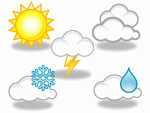
weather
THROUGHOUT HISTORY, humankind has always been in awe of the weather. Ancient civilizations considered it to be the work of the gods. Even as recently as the 1700s, it was thought that weather occurred in only one place and simply stayed put. Benjamin Franklin was one of the first who published his speculations that this was untrue when he learned that […]

wadi
A WADI IS A RAVINE or gully in the MIDDLE EAST or northern Africa that is dry for most of the year. The word wadi means “valley” or “ravine” in Arabic. When the rainy season comes, great quantities of water may rush through the wadis, destroying lives and property. Most of the year, wadis are either dry or have intermittent stream […]
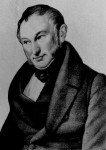
Von Thunen, Johann H. (1780–1850)
JOHANN HEINRICH von Thunen was an important theorist in the science of land use. His work brought together the fields of economics and geography to provide an illustration of the balance between land cost and transportation costs. Although his land system was designed to calculate optimal distribution in the context of preindustrialized Europe—before the development of railroads, for example—the equations and principals he […]

volcanoes
A VOLCANO IS ANY vent on the surface of the Earth, or another world, which allows molten rock, ash, steam, gas, or pyroclastic debris to spill out. Volcanoes proliferate along the edges of the Earth's tectonic plates, and are found on other satellites in our solar system, such as Io, one of Jupiter's moons. In a volcano, a tunnel or conduit […]
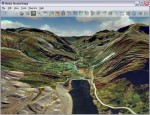
virtual geography
THE INTERNET TOGETHER with a new generation of related computer software and hardware is producing a revolution in how we conceptualize and interact with geographic places and spaces. This revolution is sustained by the continual diffusion of information and communication technologies (ICT) into many segments of a globally connected society. These ICT forms include immersive multimedia, video conferencing, computer-aided design (CAD), electronic […]
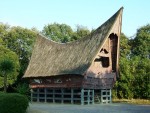
vernacular housing
HUMAN GEOGRAPHERS often distinguish between the natural environment and the built environment. The latter, also known as the cultural landscape, consists of that part of our milieu that has been modified by human action. One category of cultural landscape is created by folk cultures, which are often found in rural areas; such people generally change slowly and in small increments. They may […]

vegetation zones
THE COMPOSITION OF associations among plant species tends to vary regularly across gradients of altitude, latitude, temperature, soil types, and other variables. Making use of this observation, biogeographers are able to delineate distinct sets of conditions along such gradients that reflect changes, sometimes abrupt, in the distribution of plant associations. Where two or more such changes occur, the ecology of a […]

vegetation geography
GEOGRAPHERS ARE CONCERNED with studying elements of the natural and human environments. They want to determine the relationships between these elements and wish to explain their patterns of location. Vegetation is an important and highly visible element of the natural and cultural environment. To the trained eye, vegetation offers a rapid means of determining habitat suitability for various human endeavors. One way […]

urbanization
URBANIZATION IS THE process by which large numbers of people become permanently concentrated in relatively small areas, forming cities. The definition of what constitutes a city changes from time to time and place to place, but it is most usual to explain the term as a matter of demographics. The United Nations has recommended that countries regard all places with more than […]
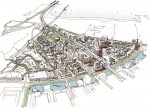
urban planning
URBAN PLANNING IS A dynamic process that involves designing or planning urban spaces or urban communities. It also involves considerations ranging from land use and zoning to environmental concerns, preservation, gentrification, and issues of growth and urban sprawl. Urban planning frequently requires responding to changes in both neighborhoods and overall urban areas, including changes in the age, class and racial composition of the […]

urban heat island
BY 2015, GLOBAL settlement patterns are projected to cross a threshold where, for the first time in human history, the majority of people will be urban dwellers. By 2025, cities are expected to contain approximately 6 billion people—two-thirds of the world's population. This unprecedented expansion of the number, size, and population of urban areas will have a significant impact on urban climates […]
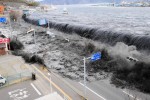
tsunamis
TSUNAMI, a Japanese word whose characters translate as “harbor wave,” has become the internationally used term that refers to a series of waves traveling across the ocean with extremely long wavelengths (the distance between wave crests), considerable length, and high velocity. The image most people have of a tsunami is a large, steep wave breaking on the shore. This image is hardly, […]

Tropic of Capricorn
THE TROPIC of Capricorn is an imaginary line encircling the Earth at the latitude of 23 degrees 30 minutes south of the equator. It is the farthest southern latitude at which the sun can appear directly overhead. It is the southern counterpart to the TROPIC OF CANCER. Below this line is the southern temperate zone and north of the line are […]

Tropic of Cancer
THE TROPIC of Cancer is an imaginary line encircling the Earth at the parallel latitude of 23 degrees 30 minutes North of the equator. This is the northern boundary of the Torrid Zone and the most northerly latitude at which the sun can shine directly overhead. It is at this point that the sun's midday rays are vertical at the summer […]
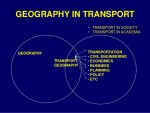
transportation geography
THE DISCIPLINE OF GEOGRAPHY aims to describe and explain the nature of spatial variation as observed on the Earth's surface. There have been a number of ways proposed to divide the discipline, but in the end it is easy to see a HUMAN GEOGRAPHY (the human use of the Earth's surface), a PHYSICAL GEOGRAPHY (natural processes on the Earth's surface), and […]
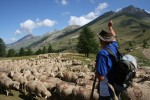
transhumance
TRANSHUMANCE IS THE ancient custom of moving domestic animals from one grazing ground to another, as from lowlands to highlands, with the changing of seasons; sheep, cattle, and goats have all been involved in this annual domestic migration process. The origin of the word partially comes from the French transhumer, to move livestock seasonally. The purpose of transhumance is to move […]

trade routes
THE SIMPLE DEFINITION of a trade route is an area or proscribed passage by land or sea used by merchants and caravans for economic purposes. A trade route can be established between any multiple points linked by trade, whatever the distance between them, and can exist within a small area or specific region or over vast distances between a number of […]

tornadoes
A TORNADO IS A RAPIDLY rotating column of air under a thundercloud. The term is believed to have come from the Spanish tronada, meaning thunderstorm. However, alternate etymologies have been traced from various Spanish and French words meaning “to turn.” Common names for a tornado include twister and funnel cloud. The biblical “whirlwind” was probably a tornado. Wind speeds within a tornado […]

time zones
TIME ZONES ARE industrial humanity's way of dealing with the phenomenon of the sun illuminating a round, rotating Earth. While a person in CHICAGO, ILLINOIS, observes high noon, a person in LONDON, England, is observing sunset, a person in Honolulu, HAWAII, is observing sunrise, and a person in MUMBAI, INDIA, is using artificial light to illuminate the night. So long as […]
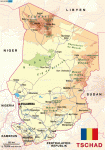
Tibesti Massif
THE TIBESTI MASSIF is a giant triangular massif located in southern LIBYA and northern CHAD. It lifts abruptly out of the SAHARA DESERT and is visually impressive. The massif covers an area of over 38,610 square mi (100,000 square km); over 11,583 square mi (30,000 square km) of this area consists of volcanic rock. The Tibesti Massif is separated from the […]

thunderstorms
THUNDERSTORMS ARE produced by cumulonimbus clouds and include thunder and lightning. They form when the troposphere is unstable or conditionally unstable for a large portion of its depth and may have tops of 40,000 to 50,000 ft (12,000 to 15,000 m) or higher. In addition, thunderstorms require a source of atmospheric moisture and a “trigger”—a feature that initiates upward vertical motion in […]

Three Gorges
THE MOUNTAINS OF the Three Gorges (Qutang, Wu, and Xiling) are some of the most spectacular scenery in all of CHINA. Located in the middle section of the Yangzi River (CHANGJIANG) they have long been the object of countless paintings, photographs, and other representations. And now they are the site of the world's largest hydroelectric project. The Yangzi is the world's […]

third world
THE TERM third world is said to have been coined by demographer Alfred Sauvy in a 1952 article in the French magazine L'Observateur, which he ended by comparing the underdeveloped nations of the world to the peasants who led the French Revolution: “this ignored Third World, exploited, scorned.” Some say French President Charles de Gaulle first used it; however, Sauvy's article is […]

territoriality
THE CENTRAL FOCUS of POLITICAL GEOGRAPHY is best understood from the point of view of the twin concepts of territory and territoriality. Neither of these can be understood apart from each other. In order to talk of territory, one must talk of territoriality and vice versa. The word has possible roots in the Latin terratorium meaning “earth,” and terrere, meaning “to frighten.” […]
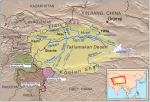
Tarim Basin
THE TARIM BASIN designates a major river and great basin located in the Uighur Autonomous Region of Sinkiang of extreme northwestern CHINA, north of the TIBETAN PLATEAU. Tarim also connotes the bank of a river that flows into a lake or that becomes indistinguishable from desert sands. The basin occupies nearly one half of Sinkiang and is encircled by the TIAN […]
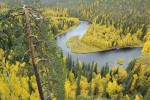
taiga
THE FORESTS OF THE world occur in several climatic zones, which range from the subpolar to tropical regions. The taiga is the name given to the forests that border the tundra meadows and dwarf shrublands of polar latitudes where annual temperature regimes prohibit the growth of trees. These forests are dominated by coniferous species. The name derives from the Russian word […]

Svalbard and Jan Mayen
Two territories of the kingdom of NORWAY, Svalbard and Jan Mayen are outposts for hunting, mining, and scientific activity far to the north of most human settlement. The islands are located north and northwest of Norway, within the southern limits of Arctic sea ice— the northernmost point of Svalbard is within a 620 mi (1,000 km) of the North Pole. Svalbard […]

surveys, land
IT IS POSSIBLE THAT from our very earliest origins, modern humans have had an interest in putting things into perspective; being able to say where things are. As the Earth's population grew and hunting grounds became more removed from the places people lived, there was a need to be able to tell others how to get there. Or perhaps on meeting […]
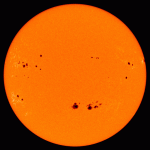
sunspots
SUNSPOTS ARE DARK, roughly circular features on the solar photosphere. They appear dark because they are cooler than surrounding parts of the photosphere— 7,000 degrees F (4,000 degrees C) as compared to 11,000 degrees F (6,000 degrees C). Most sunspots are about 20,000 mi (32,000 km) across, wider than the Earth's diameter, with a dark central umbra and a lighter penumbra. Sunspots […]
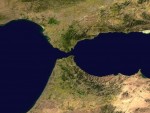
strait
A STRAIT IS A narrow waterway connecting two larger bodies of water. These narrow passageways are sometimes the only way to travel from one body of water to another. They have been important to humans throughout history. Some of the most important straits include Bering Strait, Cook Strait, the Strait of GIBRALTAR and the Bosporus. The Bering Strait is located between […]

steppe
MANY OF THE WORLD'S wide-open spaces, particularly in eastern Europe and central Asia, are considered to be steppe. A steppe is a plain mostly without trees, dominated by short grasses. This distinguishes a steppe from a PRAIRIE, which is usually qualified as having tall grasses. The word steppe is originally Russian, and it is in RUSSIA, UKRAINE, and KAZAKHSTAN where most steppes […]

spatial interaction
SPATIAL INTERACTION IS A dynamic flow process from one location to another. It is a general concept that may refer to the movement of human beings such as intraurban commuters or intercontinental migrants, but may also refer to traffic in goods such as raw materials or to flows of intangibles such as information. While the origin of the term may […]